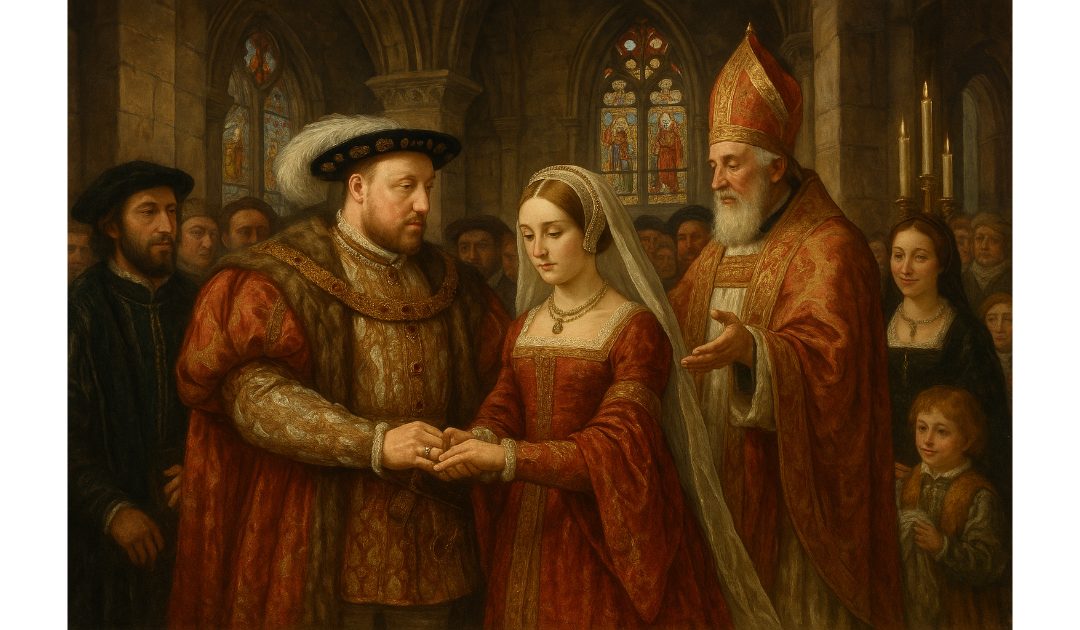On the 12th of July, 1543, King Henry VIII married his sixth and last wife Catherine Parr. Catherine was born in 1512. She was the daughter of Sir Thomas Parr of Kendal and Maud Green, coming from a noble family with strong connections at court. Known for her intellect, piety, and diplomatic skills, she played a significant role as queen consort from 1543 until Henry’s death in 1547.
Before her marriage to Henry, Catherine had been widowed twice. She first married Sir Edward Burgh and later John Neville, 3rd Baron Latimer, both marriages positioning her within influential circles. It was during her time as Lady Latimer that she became acquainted with the royal court, eventually catching the eye of the ageing King Henry VIII. Despite her affection for Thomas Seymour, whom she intended to marry, Catherine accepted Henry’s proposal, understanding the political and personal implications of becoming queen.
Catherine Parr’s marriage to Henry was marked by her role not just as a wife but as a nurse and companion. Henry was in declining health, suffering from obesity and related ailments. Catherine provided care and support, helping to manage his temper and health issues. Beyond her personal care, she was an influential figure in religious matters, known for her Protestant sympathies during a time of significant religious upheaval in England.
A learned woman, Catherine was highly educated, fluent in multiple languages, and an advocate for female education. She authored several published works, including “Prayers or Meditations” and “The Lamentation of a Sinner,” making her the first English queen to publish under her own name. Her writings reflect her deep religious convictions and her support for the reformed faith.
Catherine’s influence extended to Henry’s children. She played a crucial role in the education of Princess Elizabeth and Prince Edward, fostering an environment that valued learning and reformist ideals. Her relationship with Princess Mary was more complex due to religious differences, but she maintained a dynamic that kept the family relatively unified.
Her role as queen regent in 1544 while Henry campaigned in France showcased her political acumen. During this period, she managed domestic affairs and demonstrated strong leadership abilities, ensuring stability in Henry’s absence.
After Henry’s death in 1547, Catherine married Thomas Seymour, her previous love interest. Their marriage was short-lived and fraught with challenges, including Seymour’s inappropriate behaviour towards the young Princess Elizabeth. Catherine gave birth to her only child, Mary Seymour, but tragically died of puerperal fever in 1548, shortly after childbirth.
Catherine Parr’s legacy is one of resilience, intellect, and influence. She navigated the complexities of court life, religious reform, and personal trials with grace and determination. Her contributions to religious thought, education, and the well-being of Henry’s children left an indelible mark on English history, making her a formidable figure among the Tudor queens.

